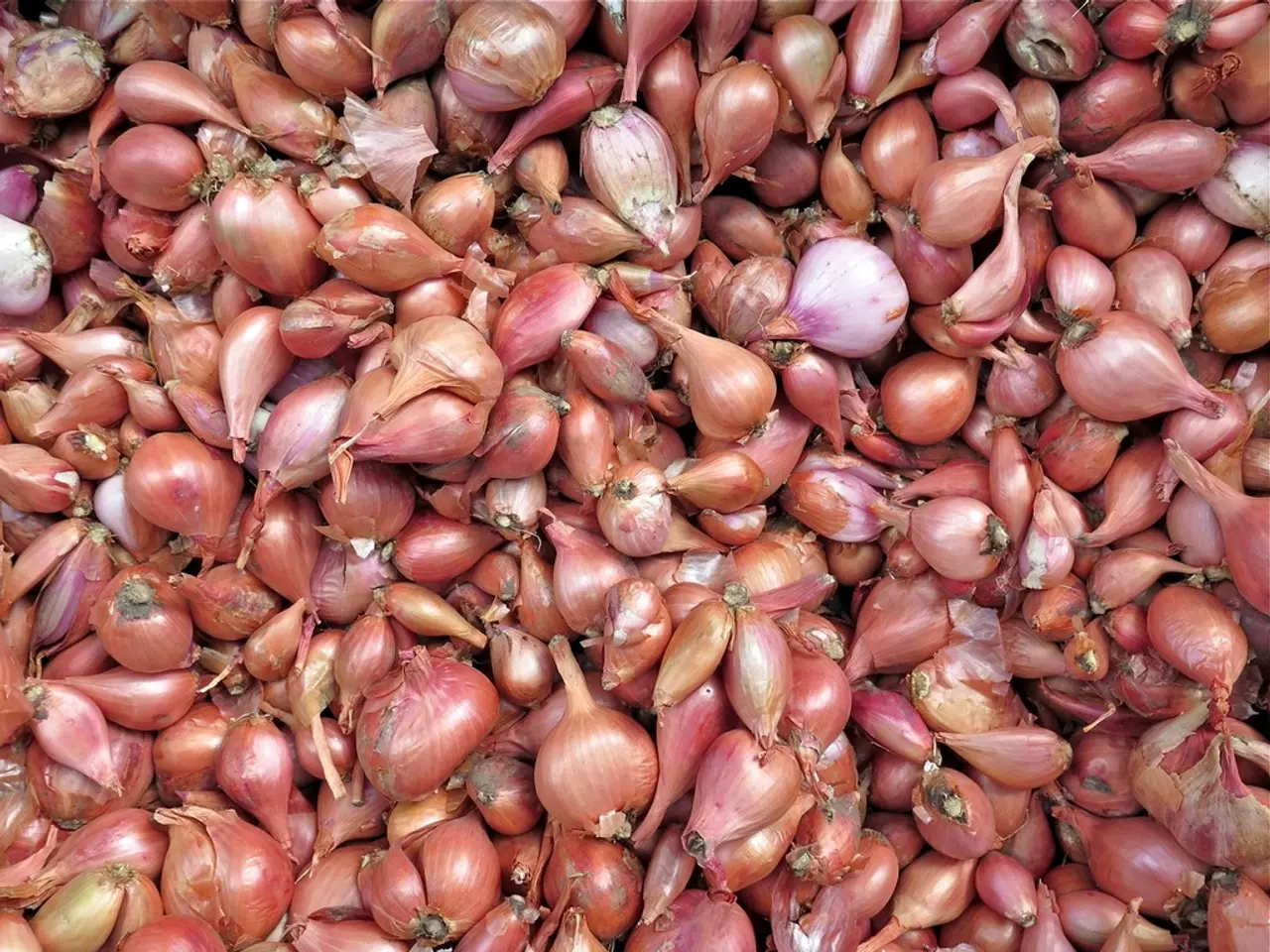Garbage-Bound Onion Peels: A Versatile Waste Resource
Onion skins, often discarded as waste, are a hidden treasure trove of nutrients and practical applications. From boosting health to enhancing household tasks and gardening, onion skins can be a valuable addition to your daily life.
Health Benefits
Rich in antioxidants, particularly the flavonoid quercetin, onion skins are associated with anti-inflammatory and cardioprotective effects. Quercetin is often recommended as an ingredient in broths or teas for potential support of immunity and inflammation control [1]. Onions, and by extension their skins, contain vitamins and sulfur compounds that have been linked to benefits for skin, hair, and aging [1][4].
Practical Household Uses
Onion skins can be used as a natural dye for fabrics, Easter eggs, and paper. Steeping onion skins in boiling water yields a concentrated brown/orange dye, a traditional, low-toxicity method used in home crafts [2]. Adding clean onion skins to stocks or broths while simmering imparts onion flavor and extracts antioxidants, making them a versatile addition to your culinary repertoire [3].
Gardening Applications
In the garden, onion skins can be composted, mulched, or used as a natural pest deterrent. Composting onion skins converts their nutrients into plant-available forms, while adding them to soil or mulch slowly releases trace nutrients as they decompose [2]. Some gardeners use onion or onion-skin infusions as a spray to deter certain pests, though the effectiveness of this method can be inconsistent [2].
Safety and Effectiveness
For edible uses, only clean, pesticide-free skins should be used, and they should be simmered for 15–30 minutes before straining and discarding [3]. For topical/skin/hair home remedies, be cautious: onion juice and extracts can irritate sensitive skin [1][4].
While much of the evidence about onion skins’ benefits comes from phytochemical analyses and traditional/folk uses, high-quality human clinical trials specifically on onion-skin extracts are limited [1][3]. Gardening and household uses are largely practical and traditional, working well as low-cost, low-risk methods.
Recipe for Onion-Skin Broth or Tea
- Gather clean, pesticide-free onion skins.
- Place the skins in a pot and cover with water.
- Bring to a boil, then simmer for 15–30 minutes.
- Strain the liquid and consume warm, optionally sweetened with a little honey for added flavour.
Dyeing Fabric or Eggs with Onion Skins
- Gather clean, pesticide-free onion skins.
- Place the skins in a pot and cover with water.
- Bring to a boil, then reduce heat and simmer for about an hour.
- Strain the liquid and let it cool.
- Submerge your fabric or eggs in the cooled dye for the desired length of time.
Adding Onion Skins to Compost or Making a Garden Spray
- Chop or shred onion skins to speed decomposition.
- Mix with green nitrogen sources (food scraps, grass clippings) to maintain a healthy carbon:nitrogen balance.
- For a garden spray, steep onion skins in water for several days before straining and diluting with water. Use sparingly and test effectiveness on a small area of plants before widespread application.
References:
[1] regionalHeute.de [2] The Journal of Agricultural and Food Chemistry [3] The American Journal of Clinical Nutrition [4] The British Journal of Nutrition [5] The Journal of Ethnopharmacology
- Incorporating onion skins into your diet can provide health benefits due to their high antioxidant content, particularly quercetin, which has anti-inflammatory and cardioprotective effects.
- To enhance the flavor and nutritional value of your home-cooked meals, consider adding clean onion skins to your stocks or broths during simmering.
- Onion skins can be used to create a natural dye for fabric, Easter eggs, or paper, providing a versatile, low-toxicity method for household crafts.
- Gardening enthusiasts can utilize onion skins to improve soil fertility and deter certain pests, as they can be composted, mulched, or used as a natural pest deterrent.




